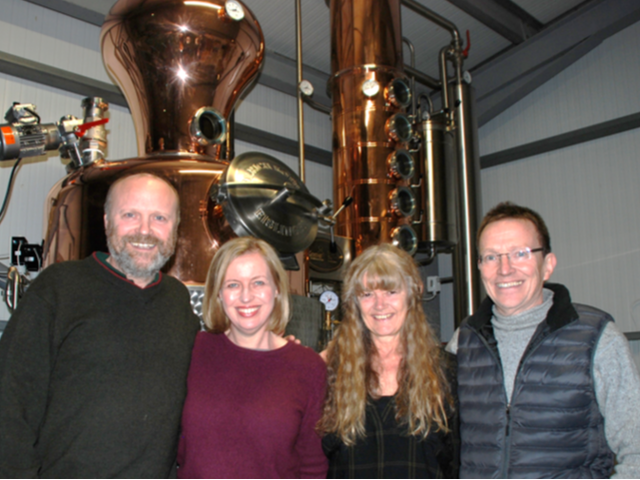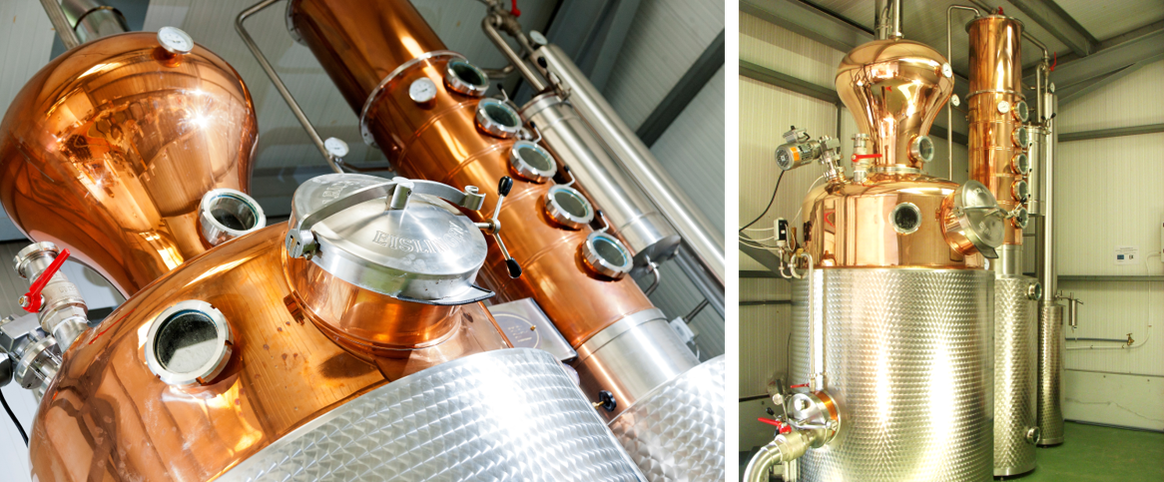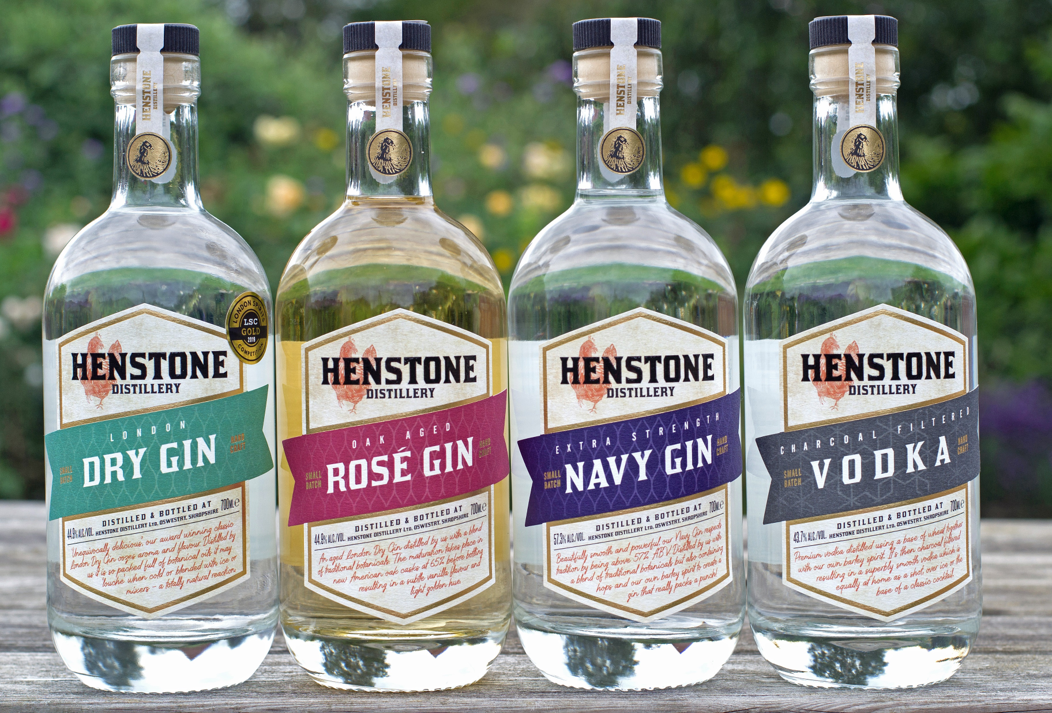|
What did you do before creating Henstone Distillery?
Chris worked in Telecoms and IT for more than 40 years and then ‘retired’ in 2015, Alex brought up the Toller children and ran the family home, and Shane and Alison have been brewing for more than 15 years, the last 12 of which have been at the well-established Stonehouse Brewery. What made you decide to create Henstone Distillery? Chris had always wanted to distil (following a fascination with chemistry sets as a child) and jumped at the opportunity to work part-time for Stonehouse brewery at the start of his retirement. He immediately started suggesting establishing a distillery to Shane and Alison and eventually (well, actually it didn’t take much persuasion) they agreed. For Shane and Alison it was a natural diversification of their business interests. What is the inspiration behind Henstone Gin? We have to say the inspiration behind our gin rests with a chap called Ulrich Kothe. Ulrich has run the Kothe Still Manufacturing company in Southern Germany for many years having spent his career building stills and distilling. On a due diligence trip to his factory, where our still was being constructed, he let us sample his products including his gin. We were blown away by the gin and knew this was the flavour profile we had to chase – we then did loads of research to establish the recipe that would create the wonderful nose, flavour and mouthfeel and are so proud we achieved it! What is the story behind the 'Henstone' name? The distillery name comes from the founders' house names – Chris and Alex live in an old public house called “The Hen and Chickens” and Shane and Alison live in Stone House. After much deliberation the name Henstone emerged! Can you tell us more about the distillery? The distillery is on a mezzanine floor overlooking the brewery – so physically it is separate. It is approximately 42 square metres in size and the still takes up a fair chunk of the floor space. We are already producing whisky (all of which is immediately put into wooden barrels for maturation), gin, apple brandy (which we call Nonpareil and is distilled from cider produced by Stonehouse Brewery) and vodka. Shortly we will be having a go at producing a British Bourbon and we are in the early planning stages of rum production. Can you tell us more about the distillation process? The production/distillation process takes two days. On day 1 we put water, neutral grain spirit and ‘most’ of our botanicals into our 1000 litre still. We then raise the temperature to a very specific level and hold it at that temperature for a very specific period of time. We then turn off the burner and leave the liquid to macerate overnight. On day two we start very early in the morning and add a ‘few more’ botanicals into the still’s botanical basket and turn on the burner. We increase the temperature slowly and after something like three and a half hours our gin ‘heart’ is flowing from the still and being captured – this continues for approximately 10 hours after which we collect the tails. A consequence of the scale of our operation and the resultant time it takes to produce the gin is that we essentially create a concentrate which we then compound with both water and neutral grain spirit at the time of bottling. As a result our classic London Dry gin louches when mixed with ice/mixers – when we first commenced bottling we thought this might be a problem but have found our customers love it. We tried filtering and found this removed the louche but also changed the character of the gin to a product we did not like so we decided to go unfiltered (we do use a 30µ filter at bottling time to remove any ‘floaters’ but this does not affect the flavour or appearance of the drink at all). What can people expect and experience if they visit the distillery for a tour/tasting? The tours are very intimate as we are only able to accommodate ten people maximum on each tour. The tours commence with a Henstone G&T of the visitors’ choice on arrival, before a presentation on distilling in general and Henstone products specifically. After the presentation a guided tour of the actual distillery will follow including a visit to our Trade Facility Warehouse, where our whisky is being stored for maturation and our other products are stored before sale. Finally we return to the bar area for a guided tasting of all the Henstone products and another G&T of the visitors’ choice before finishing. The tour takes between one and a half and two hours depending on the amount of questions. Visitors are given a 10% discount on Henstone products purchased on the day. What have been the biggest challenges and achievements so far? There have been quite a few but the following spring to mind. The biggest challenges have been getting our still installed and getting our licence. And the biggest achievements has been seeing the first gin emerging from our still (we were dancing round the distillery!), seeing the first bottle of gin with the production label, putting our first whisky into wood, and the amazing customer feedback. How would you describe your gins in 3 words? Uncompromisingly delicious gin What's your favourite way to drink your gin/s? We like our three gins as follows but we also like hearing about our customers favourite serves too!
What gins would you always have on your gin shelf (other than your own of course!)? Hmmm, we find this difficult now since we’ve been producing our own but I (Chris) would say Dyfi Distillery Original Gin and Masons Dry Yorkshire Gin! What's next for Henstone Distillery - any exciting plans you can share? We’re always thinking of the next things but I think in order at present they are:
Also Read...
Comments are closed.
|



 RSS Feed
RSS Feed


